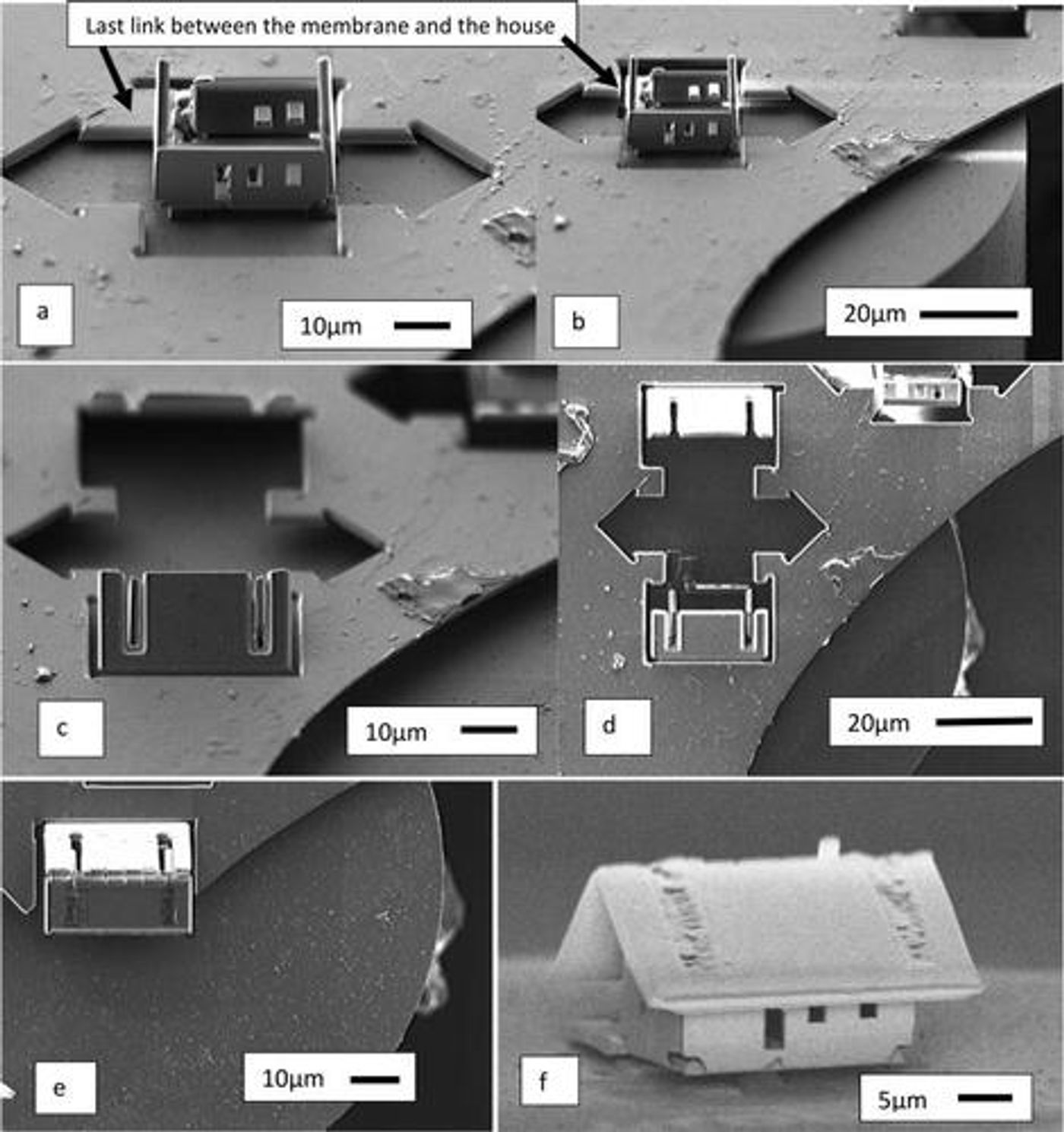Tiniest House Ever Can Be Built on Strand of Hair
A French robotics team has built a micro-house to demonstrate their new nanotechnology prowess and a system called the μRobotex nanofactory. It combines several nanotech methods, including gas injection, tiny robots and a focused ion beam. The engineers used the principles of origami to make a very, very small home out of very, very thin silica. It was constructed on the tip of an optical fiber, a thin fiber used to transmit light that is typically thinner than a human hair, which is usually about 0.003 inches thick. The mini-home that not even a mite could live in is about 25 × 25 × 1.2 μm or about 0.001 inches squared.
The report on this undertaking, “Smallest microhouse in the world, assembled on the facet of an optical fiber by origami and welded in the μRobotex nanofactory,” was published in the Journal of Vacuum Science & Technology A in May 2018. Jean-Yves Rauch, one of the authors of the paper, said:
We decided to build the microhouse on the fiber to show that we are able to realize these microsystem assemblies on top of an optical fiber with high accuracy … For the first time, we were able to realize patterning and assembly with less than 2 nanometers of accuracy, which is a very important result for the robotics and optical community.
The researchers from the Femto-ST Institute in Besançon, France demonstrated their ability to pattern, fold, cut, weld, assemble and stick together several materials into nano-3D structures and systems during their experiments.
The μRobotex nanofactory places and utilizes mini-sensing-elements on the fiber tips to make complex nanoassembly 
“The μRobotex station, the new powerful micro- and nanofactory, is based on an Auriga 60 microscope produced by Zeiss … [,which] has a big vacuum chamber of 60 × 60 × 60 cm3,” the study states.
In building the house, they used a silica membrane of 1.2 μm thick, which was coated with a layer of 40–50 nm of chromium. They mimicked origami motions to fold up the membrane into a house shape. An ion beam – a charged particle beam – was used to score, etch and cut the silica so that it could be folded in the correct places – to become walls, for example.
A naphthalene gas was injected as a coating between the walls and roof to stick the surfaces together. The walls have window and door openings and the roof was given a shingle pattern and chimney.
"It's very challenging to pilot the robot with high accuracy at this cross point between the two beams," Rauch said. Two of the robotics engineers worked simultaneously at numerous computers to build the house. While some of the process is already automated, the French team hopes to automate all of the μRobotex nanofactory’s assembly skills in the future.
“This new technology is an emergent one, which can be used for producing micro- and nanosystems for the future,” the authors conclude.
Sources:










